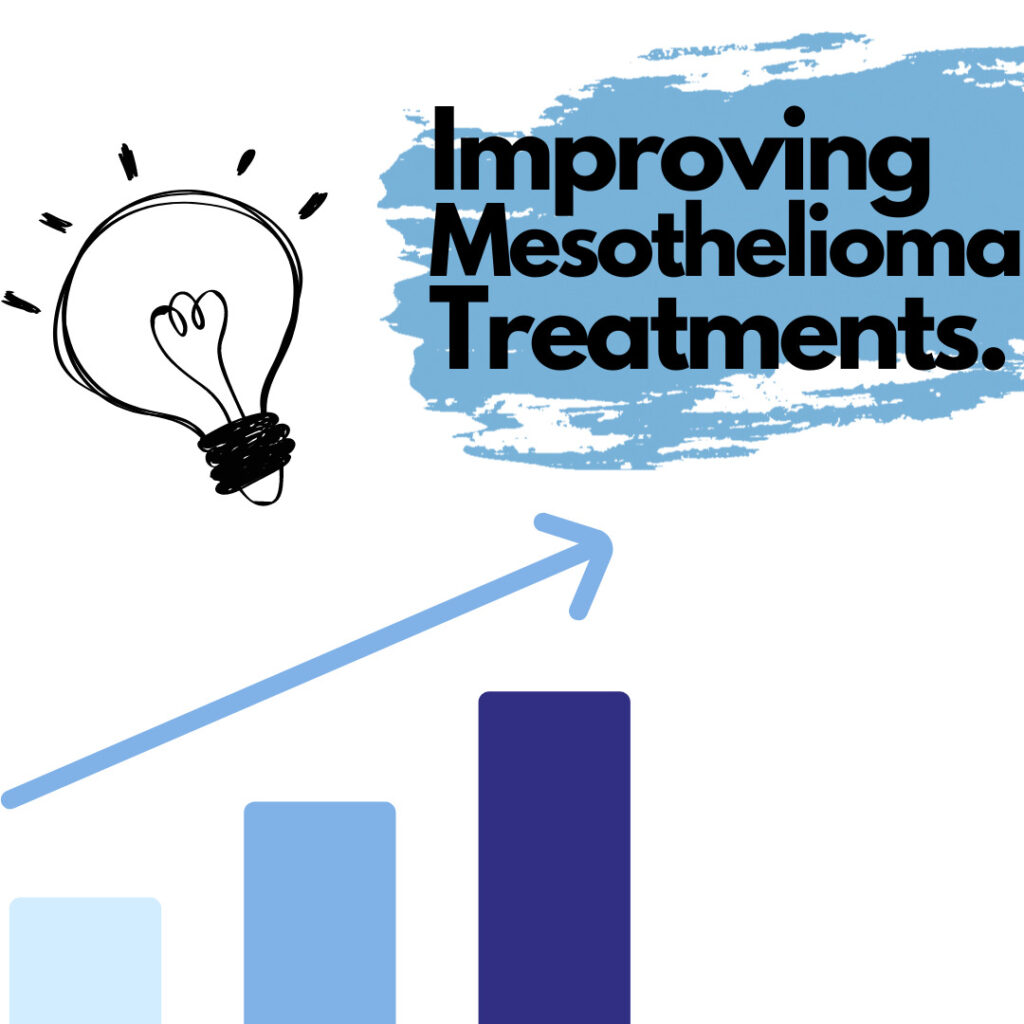Key takeaways: Although new mesothelioma treatments are being developed, there’s a notable
lag time between trial approval and widespread implementation. The existing treatments, like
chemotherapy and surgery, pose serious risks for patients that might outweigh benefits; this
necessitates a reimagining of these treatments. Recent studies have tackled this “reimagining”: a
supplement of p53-infused powder can successfully augment chemotherapy, and 3D models are
helping doctors conceptualize the effects of mesothelioma treatment.

Current Mesothelioma Treatments
Current mesothelioma treatments include chemotherapy, surgery, radiotherapy, immunotherapy,
and clinical trials. While this isn’t an exhaustive list, these techniques are most used by doctors
and healthcare providers—other techniques like gene therapy and vaccines are still decently
experimental and relatively expensive. Of these techniques, there isn’t a “gold-star standard” that
doctors always opt for first; different techniques are employed for different severities and
different medical contexts. Most times, doctors have to analyze the risks associated with each of
these techniques before implementing them, as most of them come with a significant toll to the
patient’s body. For instance, chemotherapy attacks all cells, regardless of whether they’re healthy
or cancerous, so patients feel debilitating fatigue, experience weight and hair loss, and are
immunosuppressed, among other serious side effects. Even though chemotherapy is the closest to
that “gold-star,” it’s a serious enough process for doctors to weigh the risks versus benefits.
P53 to Enhance Chemotherapy
p53 is famously known as the “tumor suppressor protein,” and is encoded for by the p53 gene.
Extensive (and decades-long) research has established functional p53 as critical for helping the
body prevent the instance of cancer (beyond mesothelioma). Although p53 is implicated in
cancer—generally—there has been a notable lack of research on p53 in the context of
mesothelioma treatment.
A recent study (2024) piloted an introduction of p53 via a powder for mesothelioma patients
undergoing chemotherapy. Their results were exciting: after ingestion of the powder, patients
experienced enhanced benefits of chemotherapy, which can be operationalized as slowed tumor
growth and fewer side effects. The researchers also found that a higher dose of p53 seemed to
have a similar effect to chemotherapy itself.
3D Printing of Pleural Cavity
Although developed in the context of improving photodynamic therapy (PDT), a 3D
visualization of the pleural cavity is widely applicable, especially for surgery and radiation. The
researchers used CT scans of mesothelioma patients—CT scans compile small splices of tissue,
organ, and bone images to provide a texturized, digital image—in order to map the 3D print.
The aforementioned are just a few examples of the ways in which conditions are improving for
more traditional mesothelioma treatments. By taking advantage of technological
breakthroughs—even if they’re not directly related to mesothelioma—researchers can improve
the patient conditions and outcomes.
If you or a loved one has been diagnosed with mesothelioma, please call 1 (800)-505-6000 or fill
out our form. We are here to help you navigate the legal process of filing a claim to receive
compensation for your mesothelioma diagnosis. We help mesothelioma victims and their
families in Pennsylvania.
Sources:
https://www.mdpi.com/2072-6694/16/7/1252
https://www.nature.com/articles/s41434-023-00424-y
https://www.sciencedirect.com/science/article/pii/S157210002400053X